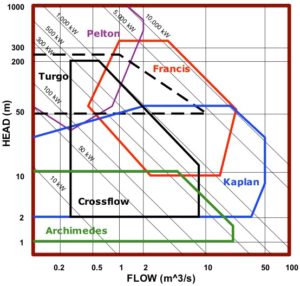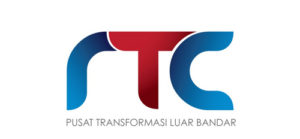FIRST ROYAL BELUM EXPEDITION 10 – 12 MAY 2016
SECOND ROYAL BELUM EXPEDITION 03 – 07 OCTOBER 2016
Electric Outboard for Orang Asli
PROGRAM TRANSFORMASI LUAR BANDAR (NBOS4)
This project aims to give emphasize and exposure to green technology that will be carried through micro-hydroelectric development in a sustainable manner in order to enhance eco-tourism in the area. The areas have been identified through several visits in 2013 with the purpose of improving the basic facilities in Kampung Sungai Kejar [1] while maintaining the natural treasures of the oldest in the world that can be traced back to 130 years ago. Based on these advantages, there is a need to consider Royal Belum State Park to remain as a key area for biodiversity conservation in Asia. Jabatan Perancang Bandar Negeri Perak has introduced four eco-tourism zones in 2003, which are Pulau Banding, Jenut Papan, Sungai Kenerong, Sungai Kejar and Sungai Kejar as potential tourist spots and protected areas by the Perak State Parks Corporation (PTNP). Particular attention is given to Sungai Kejar Zone as a potential attraction to tourists who come to this area [2-6].
Seeing that how important it is electricity as basic necessities, forest conservation through low-cost micro-hydro system management will be identified as replacement to generator sets. Knowledge management and economic-ecological initiatives can also be enhanced by the presence of electrical energy source. In addition, the development of non-timber business products are also a major goal of this research as well as identifying areas suitable for the construction of a one-stop center for local handicraft products for tourists’ conveniences.
The area has an ideal geographical advantage where it has a river flow and water fall that can generate electricity. Hydro power will be converted to potential energy by using the flowing water and converted to kinetic energy and finally electric energy. The hydro generator size depends on the flow velocity of the river and the cross-section area of the river to generate the flow rate and eventually can generate power output of the turbine. For domestic use such as in remote area, small-scale electricity generation is more popular and is also called “micro-hydro”. A micro-hydro can generate from 5kW to not more than 100 kW. The system does not require water reservoirs like dams but use river flow configuration known as “run-of-river” [7].
Using the technology of low cost micro-hydro-electric, UTM researchers will use green energy as a catalyst to promote economic growth and development in targeted villages through cluster approach that begins with Kg. Sg. Kejar. Micro-hydro power is a sustainable energy source that could have an important impact on the environment in order to reduce environmental pollution. Water diverted from the river and sent down through the pipeline then turns turbines connected to a generator to produce electricity. Water is then recombined with the flow of resources, which can be used for irrigation and support plant life, the system has an environmental impact that is very little. Micro hydro systems do not require a high flow rate to produce a continuous supply of energy that can be delivered by a considerable distance. The system is relatively inexpensive and requires little maintenance compared with other technologies, such as solar and wind [8]. Micro-hydro system will supply electricity to the local, health clinics, schools and prospective handicraft factory to create new sources of income for the population.
Hydropower
The working concept of the hydropower proposed based on cross-flow turbine. Nozzle power of the turbine depends on the height-head and flow rate. Turbine was selected based on the approximate ranges of head, flow and power applicable to the different turbine types are summarized in the chart of Figure 1. Type of cross-flow turbine or Kaplan are selected based on the level of low maintenance and is capable of producing power of 17.7 kW with 16 meter head.
 Figure1: Head-flow range for turbines [8]
Figure1: Head-flow range for turbines [8]
Objectives:
- Installation of low cost micro-turbines and hydro-electric system at Kampung Sungai Kejar intended for electricity supply throughout the year without the constraints of raw materials.
- to evaluate locals’ perception and readiness towards introduction of appropriate rural technologies – micro-hydro turbine
- Micro turbine and power generation system technology transfer to indigenous peoples in remote areas such as Kampung Sungai Kejar Royal Belum State Park.
Methodology:
This study should adopt a mix approach of quantitative and qualitative methodologies.
Justification:
Such programs need to be implemented in view of the needs of the local population for main infrastructure such as the supply of electricity to every home. In addition, sufficient electrical energy resources can generate income for residents by means of a one-stop center for the manufacturing of timber-based products.
To realize this noble effort, experts from UTM Razak School of Engineering and Advanced Technology in collaboration with TNB Energy Services Sdn. Bhd., Jabatan Kebajikan Orang Asli, Perbadanan Taman Negeri Perak, Pulau Banding Foundation and local communities will implement a program to develop micro-hydroelectric system.
Impacts:
- Increase income due to permanent source of electrical energy
- Reducing the cost of living since the fuel consumption is at minimum.
- Increase productivity
- Improve protection and safety
- Increase facilities
Expected Outcome:
This study should uncover tangible as well as underlying factors which may contribute towards locals’ awareness and readiness for utilising such appropriate rural technologies in Royal Belum State Park. The system is relatively inexpensive and requires little maintenance compared to other technologies such wind energy. Micro-hydro system will supply electricity to the locals, health clinics, schools and soon to be created handicraft factory that will create a new source of income for the people.
References
- Shamsul Sarip, M.Zaki Hassan, M. Yusof Md Daud, Norazmein Abd Rahman dan Sa’ardin Abd Aziz. 2014 Renewable Energy Harness To Uplift The Prosperity Of Royal Belum Forest. National Conference On Royal Belum 2014.
- Suksuwan, S. and S. Kumaran, A Proposal for a Management Plan for the Royal Belum, Perak Darul Ridzuanwith some Recommendations. WWF MALAYSIA, 2003.
- Houben, I. Royal Belum State Park. http://www.wonderfulmalaysia.com/royal-belum-state-park-malaysia.htm 2007 [layari pada 25 Sept 2014].
- JAKOA. Laman Web Rasmi Jabatan Kemajuan Orang Asli. http://www.jakoa.gov.my 2014 [layari pada 26 Sept 2014].
- Abdullah, A.R., C.N. Weng, and A.P.M. Som, The potentials and perils of ecotourism in Belum Temengor Forest Complex. World Applied Sciences Journal, 2011. 12(T&H)): p. 1-9.
- Siti-Nabiha, A., et al., Towards a Sustanable Tourism Management in Malaysia. Lex ET Scientia Int’l J., 2008. 15: p. 301.
- Wazed, M. and S. Ahmed, A Feasibility Study of Micor-Hydroelectric Power Generation at Saponari Waterfall, Khagrachari, Bangladesh. Journal of Applied Sciences, 2009. 9(2): p. 372-376.
- Bratrich, C., et al., Green hydropower: a new assessment procedure for river management. River Research and Applications, 2004. 20(7): p. 865-882.
__________________________________________________________________________________





